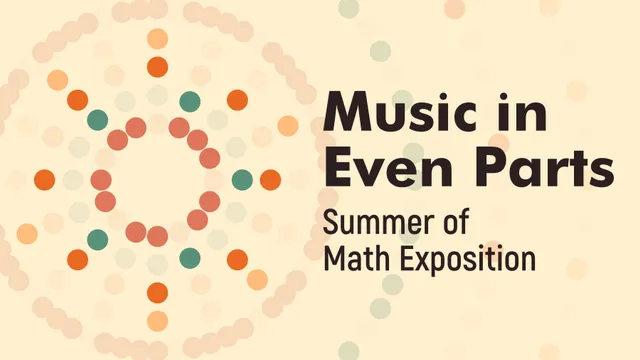Music in Even Parts
Audience: high-schoolmiddle-school
Tags: musicdivision
Interactive article that explains euclidean rhythms
Analytics
Comments
Interesting topic and interactive! It is quite satisfying to hear the music coming out of a mathematical algorithm. However, the explanation of what is considered “Euclidian algorithm” or the Euclid algorithm contains a lot of jargons, so it’s confusing for a high school student like me. There are some technical vocabularies about music such as “frets”, “diatonic ”, “chromatic”, “temperament”, etc. that is not clearly explained, hindering my process of understanding the topic. Additionally, I’m kind of confused about the reason we need pulses to be “evenly spread”. Is it for good hearing or something else?
Overall, the topic is new and very exciting. The interactive is amazing as well. However, the content is not properly explained and executed for someone with little background in math or music.
As someone with no background in music, I think I liked the post a lot. It’s nice to see how the scales actually make sense.
That said, I had a really hard time understanding the explanation for E(7, 16). I think it’s wrong. In the last step that is shown (2-1=1), the pulses should still be split into two parts, not one. And a new last step should be added (1-1=0) to get the final one single part. Because it wasn’t done like this, the third portion wasn’t put between the other two (as I believe should be) and was instead just added to the end. Now, these are the same if we ignore rotations, but my concern is that the explanation as it is should be wrong. I believe this also affects World Rhythms. I only checked tresillo and cinquillo and they’re also rotated from what I would expect them to be if the explanation was correct. I hope I’m right here.
If it was a little longer and deep dived I would have voted it as outstanding. Specially, I liked how he talked about pulses than gcd and Euclid algorithm.
Really intriguing link between music and math! Helps empower mathematicians to learn music and musicians to learn math.
Very interesting, thank you for the nice interactive parts!
This was really great! Amazing interactive elements and nice explanations. I was waiting for something big at the end, explaining how this all ties together and all of Taylor Swift’s music could be created by a simple algorithm or something, but left feeling a little bit anticlimactic. Regardless, a very interesting read and very well presented.
Nice motivation of the Euclidean algorithm. The section on Bjorklund’s algorithm seemed disconnected from the rest of the article though.
interactivity was fun
Thank you! This immediately connected me with the audio plugin HY-ESG that I’ve been using. The math had remained a mystery. This piece has opened new musical doors for me, and I’m inspired to try new rhythms and time signatures! I also did not know about its connection with scales.
